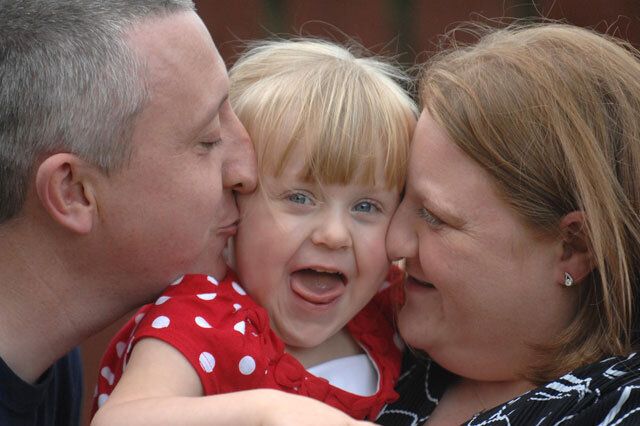
A small red birthmark on a baby's eye grew into a rare and deadly tumour that doctors removed just days before it would have attached to her brain.
Lynda Gibson, 38, from North Lanarkshire, first noticed the tiny red speck on her daughter Georgia's left eye when she was just three weeks old.
Two weeks later Georgia's eye was so swollen that strangers started to accuse Lynda of hitting her daughter.
"It was a nightmare," Lynda told The Herald Scotland. "When she took a growth spurt it [the birthmark] got a big growth spurt too, because it feeds off the blood vessels. She just looked like she was being beaten up.
"Complete strangers would come up and ask, 'Did you hit your baby?, 'What's wrong with your baby's face, did you drop her?'
"You expect comments like that from kids, but from adults it was shocking. That's what I found the most hurtful."
The family's health visitor had to step in and advise social services that Georgia had a medical condition and was not at risk of abuse.
At first the family's GP put the swelling down to a burst blood vessel, but at a later routine check-up Lynda was told that the birthmark had developed into a tumour that was growing rapidly behind her optic nerve.
Birthmarks, which are also known as haemangiomas, are very common and usually harmless.
They normally grow on the skin, but in Georgia's case, her birthmark was mainly growing internally - something that happens in just one in 100,000 cases.
Doctors told Lynda and her husband Richard that if Georgia's tumour had gone undiagnosed for another 10 days, it would have attached to her brain and become untreatable.
The disease had left Georgia with no peripheral vision and a stigma had formed in her left eye.
The normal course of treatment would previously have been cancer treatment to shrink the growth.
But Georgia became one of the first babies in Scotland to be put on a trial drug called propranolol - a beta-blocker traditionally used to treat hypertension and heart conditions.
Georgia was kept in hospital for 24 hours, in which time the drug successfully reduced the swelling around her eye.
For the next 18 months, her parents fed her the drug through a syringe every eight hours and she had weekly appointments with a cardiologist, dermatologist and ophthalmologist to monitor her progress.
Georgia is now three years old and has made a full recovery. Her tumour is still there, but doctors have said it will continue to shrink naturally and is no longer a threat.
It is expected to have shrunk by 50 per cent by the time she is five and by 90 per cent by the time she is nine.
Lynda said: "Now she has no mark on her at all and has equal vision in both eyes. She has been very lucky."

Lynda now plans to walk 10 miles to raise money for Yorkhill Children's Charity to thank the staff who saved her daughter.